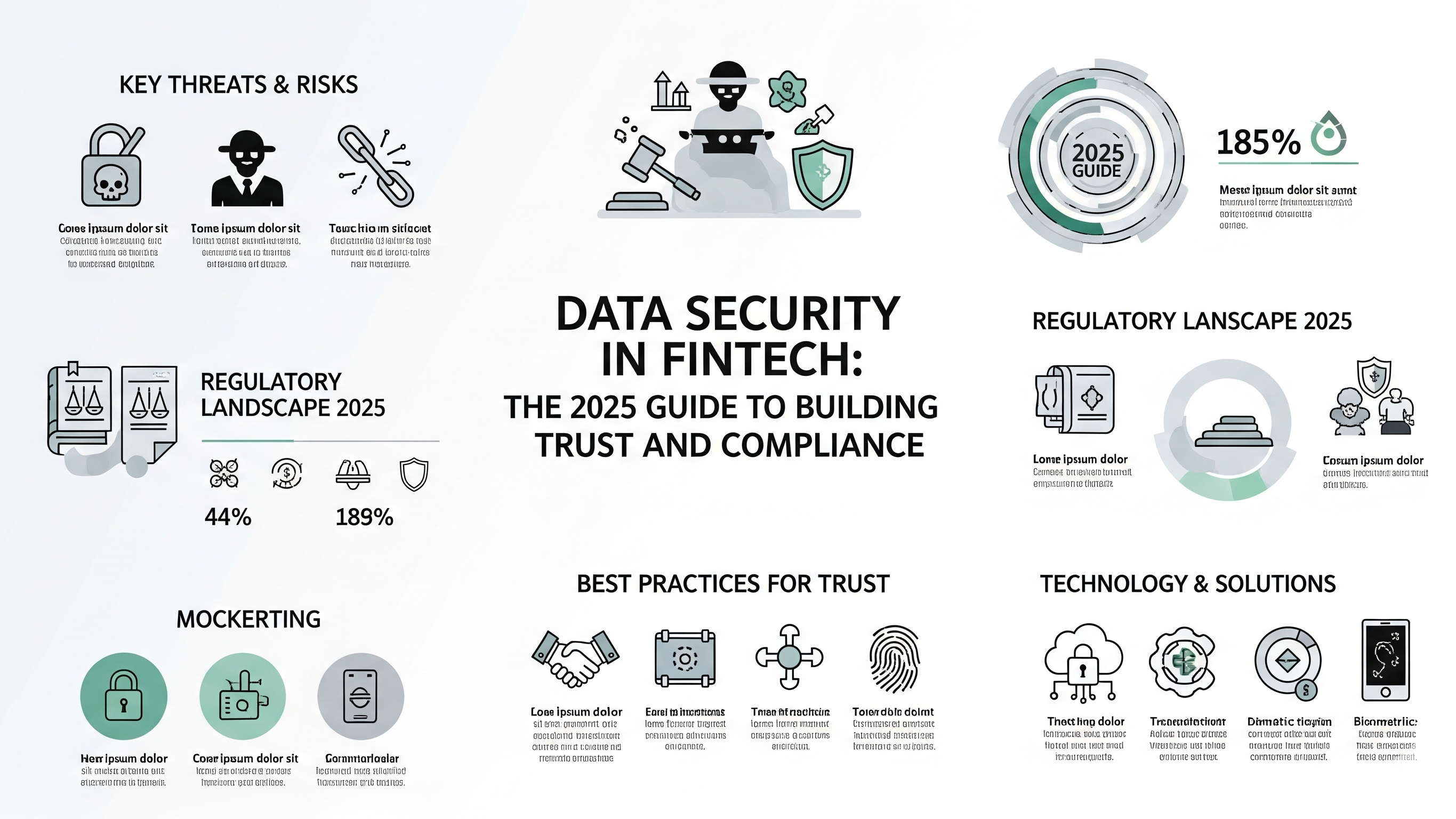In the world of financial technology, data isn’t just ones and zeroes—it’s sensitive personal identities, account details, and, ultimately, money. This makes fintech companies among the most attractive targets for cybercriminals. A single breach can erase customer trust, trigger massive regulatory fines, and end a company’s existence overnight.
For any fintech, from a fledgling startup to an established neobank, data security is not a backend IT concern; it is the very bedrock of its business model. It’s the foundation of customer trust and the key to long-term survival. This guide breaks down the critical threats, essential regulations, and foundational strategies for implementing ironclad data security in fintech.
Why Data Security is the Cornerstone of Fintech
The value of the data fintechs handle makes them prime targets. But beyond the obvious risk of financial theft, the repercussions of a breach are multifaceted:
- Loss of Trust: Consumers are entrusting you with their most sensitive information. A breach shatters that trust, and in a competitive market, customers will swiftly move to a more secure provider.
- Regulatory Annihilation: Regulations like GDPR and CCPA empower authorities to levy fines that can reach millions of dollars or a percentage of global revenue for data mishandling.
- Direct Financial Loss: This includes funds stolen through fraud, ransom payments to hackers, and the immense cost of investigating the breach and repairing systems.
- Operational Downtime: A severe attack can halt operations, preventing customers from accessing their funds and causing further reputational damage.
Top Data Security Threats Targeting Fintechs Today
Understanding the enemy is the first step to building a defense. The most common threats include:
- Phishing and Social Engineering: Sophisticated attacks target employees and customers alike, tricking them into revealing login credentials or other sensitive data.
- API Vulnerabilities: Fintech ecosystems are built on APIs that connect to banks, payment processors, and other services. Insecure APIs are a top attack vector for data exfiltration.
- Cloud Misconfigurations: While the cloud offers scalability, a simple misstep in security settings can accidentally expose massive datasets to the public internet.
- Insider Threats: Risks can be malicious (a disgruntled employee) or accidental (an employee falling for a phishing scam or mishandling data).
- Third-Party Risks: Your security is only as strong as the weakest link in your supply chain. A breach at a vendor or integrated partner can compromise your systems.
Key Regulations and Compliance Frameworks
Navigating the complex regulatory landscape is non-negotiable. Key frameworks include:
- PCI DSS (Payment Card Industry Data Security Standard): The foundational standard for any company that stores, processes, or transmits credit card information. Compliance is mandatory.
- SOC 2 (Service Organization Control 2): This framework is tailored for technology service providers. It audits controls based on five “trust service principles”—security, availability, processing integrity, confidentiality, and privacy. A SOC 2 report is a powerful trust signal to partners and enterprise clients.
- GDPR (General Data Protection Regulation) & CCPA (California Consumer Privacy Act): These regulations govern how companies handle the personal data of EU and California residents, respectively. They enforce strict rules on consent, data subject rights, and breach notification.
- GLBA (Gramm-Leach-Bliley Act): A U.S. regulation requiring financial institutions to explain their information-sharing practices and safeguard sensitive data.
Pillars of a Robust Fintech Data Security Strategy
Building a secure fintech platform requires a defense-in-depth approach across people, processes, and technology.
- Encryption Everywhere: All sensitive data must be encrypted both in-transit (using TLS 1.3+) and at-rest (using strong algorithms like AES-256). This ensures data is useless if intercepted.
- Strong Authentication and Access Control:
- Multi-Factor Authentication (MFA): Mandate MFA for all employee and customer accounts to prevent unauthorized access via stolen passwords.
- Role-Based Access Control (RBAC): Ensure employees can only access the data absolutely necessary for their job function (the principle of least privilege).
- Secure Software Development Lifecycle (SDLC): Security must be “baked in, not bolted on.” This means:
- Conducting threat modeling during the design phase.
- Using automated security testing tools (SAST, DAST).
- Performing mandatory code reviews focused on security.
- Regular Audits and Penetration Testing: Schedule at least annual penetration tests conducted by independent, ethical hackers to proactively find and fix vulnerabilities before attackers do.
- Employee Training and a Culture of Security: Your technology is only as effective as the people using it. Conduct regular security awareness training to turn your workforce into a vigilant first line of defense.
- Data Minimization and Tokenization: The best data to protect is data you don’t have. Adopt a policy of data minimization—only collect and store what is absolutely necessary. For data you must store, like payment information, use tokenization, which replaces sensitive data with non-sensitive tokens that are useless to attackers.
The Future of Fintech Security
Is your fintech application secure? Don’t leave it to chance. Our security experts specialize in helping fintech companies build secure, compliant, and trustworthy platforms.
[Schedule a free, confidential security consultation today] to identify your risks and build a defense strategy.
Conclusion
In fintech, security and trust are interchangeable currencies. A robust, transparent approach to data security is no longer a compliance cost; it is a powerful marketing tool and a fundamental competitive advantage. By building a culture of security, adhering to key frameworks, and implementing the technical pillars outlined above, you don’t just protect your company—you build the foundation for lasting growth and success.
Is your fintech application secure? Don’t leave it to chance. Our security experts specialize in helping fintech companies build secure, compliant, and trustworthy platforms.
Frequently Asked Questions (FAQ)
Q: What is the most important security standard for a fintech startup?
A: If you handle card payments, PCI DSS compliance is non-negotiable. For broader data security assurances and to build enterprise trust, working towards a SOC 2 Type II report is highly recommended. Most fintechs need a layered approach to compliance.
Q: How often should we conduct penetration testing?
A: At a minimum, conduct a comprehensive penetration test annually. It is also critical to test after any major application release, significant infrastructure change, or upon adding new third-party integrations.
Q: What’s the difference between encryption and tokenization?
A: Encryption uses a key to mathematically scramble data into ciphertext, which can be decrypted back to its original form with the correct key. Tokenization replaces sensitive data (like a Primary Account Number) with a randomly generated token that has no mathematical relation to the original data. The original data is stored in a highly secure “token vault,” while the token is used throughout your systems. Tokenization is often favored for payment processing as it reduces the scope of PCI DSS compliance.
Q: Who is ultimately responsible for data security in a fintech company?
A: While everyone has a role to play, ultimate responsibility lies with the C-Suite and the Board of Directors. They are accountable to customers, investors, and regulators for ensuring a robust security program is in place and adequately funded.


